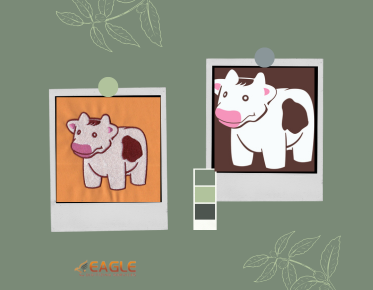Best Practices for Digitizing a Logo for Embroidering
Digitizing a logo for embroidery is a crucial step in ensuring that the final embroidered product meets the desired quality and detail. The process involves converting a logo into a digital file that an embroidery machine can read. This file guides the machine on how to stitch the design onto fabric. The best way to digitize a logo for embroidering involves understanding the intricacies of embroidery digitizing, selecting the right software, and possibly engaging professional services. For those looking to delve into the world of embroidery digitizing, machine embroidery digitizing is a great starting point.
Understanding Embroidery Digitizing
Embroidery digitizing is the art of translating a design into a format that embroidery machines can interpret. This process requires a keen eye for detail and an understanding of how stitches will interact with different types of fabric. The digitizer must consider factors such as stitch type, stitch direction, and stitch density to ensure the final product is both aesthetically pleasing and durable.
Choosing the Right Software
There are numerous embroidery digitizing software options available, each with its own set of features and capabilities. Some popular choices include Wilcom, Hatch, and Brother PE-Design. These programs offer a range of tools that allow users to create intricate designs with precision. When selecting software, consider the complexity of your designs and the level of control you need over the digitizing process. For those interested in exploring software options, embroidery digitizing software can provide valuable insights.
Steps to Digitize a Logo
1. Analyze the Logo
Before digitizing, analyze the logo to understand its elements. Consider the colors, shapes, and any text that needs to be included. This analysis will guide you in choosing the appropriate stitch types and directions.
2. Choose the Right Stitch Types
Different parts of the logo may require different stitch types. For example, satin stitches are ideal for borders and text, while fill stitches work well for larger areas. Understanding when to use each stitch type is crucial for achieving a professional look.
3. Set the Stitch Direction
The direction of the stitches can affect the texture and appearance of the embroidery. Experiment with different stitch directions to see how they impact the final design. This step is particularly important for logos with gradients or shading.
4. Adjust the Stitch Density
Stitch density refers to how close the stitches are to each other. Adjusting the density can help achieve the desired level of detail and prevent issues such as puckering or thread breakage. It's important to find a balance that maintains the integrity of the fabric while ensuring the design is clear.
Engaging Professional Services
For those who are new to embroidery digitizing or have complex designs, engaging professional services can be a wise decision. Professional digitizers have the experience and tools necessary to convert logos into high-quality embroidery files. They can also provide guidance on fabric selection and machine settings to ensure the best results. If you're considering professional help, embroidery digitizing services can offer expert assistance.
Testing and Finalizing the Design
Once the logo is digitized, it's essential to test the design on a sample fabric. This step allows you to see how the design translates to the material and make any necessary adjustments. Pay attention to how the stitches lay on the fabric and whether the colors and details are accurately represented.
Future Trends in Embroidery Digitizing
As technology advances, the field of embroidery digitizing continues to evolve. New software features and machine capabilities are making it easier to create complex designs with greater precision. Additionally, the rise of online platforms is making professional digitizing services more accessible to businesses and hobbyists alike. As you explore the possibilities of embroidery digitizing, consider how these trends might impact your projects. Eagle Digitizing excels in providing professional embroidery digitising services, ensuring every design is crafted with unmatched precision.


.png)
